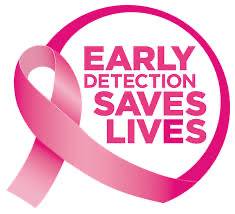Breast Cancer Month: Understanding Your Breasts and Examining Them…
Every October, Breast Cancer Awareness Month shines a spotlight on the importance of breast health, early detection, and research. It serves as a vital reminder for individuals to be proactive about their breast health and understand the anatomy and function of their breasts, as well as the implications of breast cancer.
Understanding Breast Anatomy
Breasts are complex structures primarily composed of glandular and adipose (fat) tissue. They play a crucial role in lactation but are also significant in a woman's body image and identity. Here’s a closer look at the components of breast anatomy:
- **Glandular Tissue**: This tissue contains lobules, which are small glands that produce milk, and ducts, which are channels that carry milk to the nipple.
- **Adipose Tissue**: The amount of fat in the breast varies significantly from person to person, affecting breast size and shape.
- **Connective Tissue**: This tissue helps support the glandular and adipose tissue.
- **Nerves, Blood Vessels, and Lymphatic Vessels**: These are essential for sensation, nourishment, and immune responses.
Understanding these components can help individuals recognize normal breast structure and function, making it easier to detect any unusual changes.
The Importance of Self-Exams
Breast self-exams (BSE) are a vital tool for early detection of breast cancer. While mammograms are crucial for screening, self-exams empower individuals to become familiar with their bodies and recognize any changes. Here are key steps for performing a self-exam:
1. **Visual Inspection**: Stand in front of a mirror with your arms at your sides, then raised. Look for any changes in size, shape, or contour, and note any unusual swelling or dimpling.
2. **Physical Examination**: Use the pads of your fingers to feel for lumps or abnormalities. Check the entire breast area, including the underarm and collarbone area, and feel for any unusual texture or mass.
3. **Regular Schedule**: Aim to perform self-exams monthly, ideally a few days after your menstrual period, when breasts are less likely to be tender or swollen.
Recognizing Warning Signs
It’s essential to be aware of potential warning signs of breast cancer. While some symptoms may be benign, recognizing them can lead to timely medical evaluation. Key symptoms include:
- **Lumps**: A hard, irregular lump or mass, particularly if it feels different from surrounding tissue.
- **Changes in Size or Shape**: Sudden changes in one breast compared to the other.
- **Skin Changes**: Dimpling, puckering, or changes in color, including redness or swelling.
- **Nipple Changes**: Discharge (other than breast milk), inversion, or changes in skin texture around the nipple.
If you notice any of these signs, consult a healthcare provider promptly for further evaluation.
Risk Factors for Breast Cancer
Understanding the risk factors associated with breast cancer can help individuals make informed decisions about their health. While some factors are beyond control, others can be managed:
1. **Age**: The risk increases as you age, particularly after 55.
2. **Family History**: A family history of breast cancer can elevate risk. Genetic testing for mutations in the BRCA1 and BRCA2 genes is often recommended for those with a strong family history.
3. **Reproductive History**: Early menstruation (before age 12), late menopause (after age 55), having no children, or having a first child after age 30 can increase risk.
4. **Lifestyle Factors**: Obesity, lack of physical activity, excessive alcohol consumption, and a diet high in saturated fats are associated with a higher risk.
5. **Hormone Replacement Therapy**: Long-term use of combined hormone therapy for menopausal symptoms can also increase risk.
Understanding these factors can help individuals engage in preventive measures, such as regular screenings and lifestyle modifications.
Screening and Diagnostic Tools
Breast cancer screening is crucial for early detection and effective treatment. The following tools are commonly used:
- **Mammograms**: These X-ray images of the breast can detect tumors that may be too small to feel. Women are generally advised to begin annual mammograms at age 40, or earlier if they have risk factors.
- **Ultrasound**: This imaging technique can help distinguish between solid masses and fluid-filled cysts and is often used as a follow-up to mammograms.
- **MRI**: Magnetic resonance imaging may be recommended for women at high risk for breast cancer, providing detailed images of breast tissue.
- **Biopsy**: If a suspicious area is found, a biopsy may be performed to determine if the cells are cancerous.
Treatment Options
If diagnosed with breast cancer, several treatment options are available, depending on the type and stage of cancer. These include:
- **Surgery**: Options may range from lumpectomy (removing the tumor) to mastectomy (removing one or both breasts).
- **Radiation Therapy**: This treatment uses high-energy waves to target and kill cancer cells.
- **Chemotherapy**: Systemic treatment that involves the use of drugs to kill cancer cells, often used before or after surgery.
- **Hormonal Therapy**: For hormone receptor-positive cancers, medications may be used to block hormones that fuel cancer growth.
- **Targeted Therapy**: These treatments target specific characteristics of cancer cells, such as the presence of HER2 protein.
Conclusion
Breast Cancer Awareness Month serves as a reminder of the importance of understanding your breasts, recognizing changes, and seeking appropriate medical advice. By staying informed, practicing regular self-exams, and participating in recommended screenings, individuals can take charge of their breast health. Awareness, education, and action are key to improving outcomes and supporting the fight against breast cancer. Whether through participation in local events, supporting research, or simply sharing knowledge, everyone can contribute to a future with less breast cancer.


